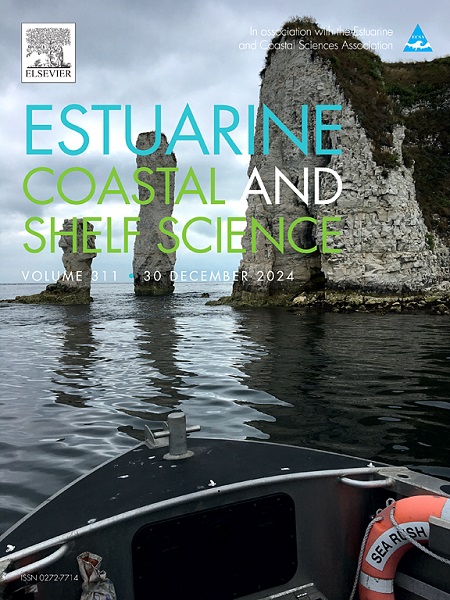Distribution pattern and biochemical variability of Irish invasive seaweed across a spatial gradient
IF 2.6
3区 地球科学
Q1 MARINE & FRESHWATER BIOLOGY
引用次数: 0
Abstract
This study updates the distribution of seaweed invasive alien species (IAS) in Ireland and demonstrates the natural spatial variation of their phenolic compounds and fatty acid profiles, coupled with an assessment of biomass availability. We examined the intertidal area of 68 coastal locations and detected the presence of six IAS, but abundant populations (30–50 % cover) were only recorded for Sargassum muticum in some western and southern locations along the Irish coast. However, the fact that so many invasive species were widely distributed represents a dormant threat to Irish coastal ecosystems. Regarding distribution, we detected a spatial expansion of Colpomenia peregrina and Codium fragile, while a contraction was recorded for S. muticum and Asparagopsis armata. Undaria pinnatifida represents a recent introduction, and Gracilaria vermiculophylla is spreading to new locations in the south and west. In general, saturated fatty acid content was high in C. fragile and C. peregrina samples, and higher monounsaturated fatty acid content occurred in the latter. Sargassum muticum and G. vermiculophylla presented more polyunsaturated fatty acids and n-3 fatty acids (together with C. fragile). Statistical analyses showed that, for to S. muticum, higher water temperatures decreased metabolite content in all areas sampled, and higher concentrations of metabolites were generally found in northern populations. However, biomass was not abundant at these sites, which poses challenges facing valorisation of these natural resources. This study provides important baseline information of fatty acid profiles and phenolic content of Irish IAS, an essential preliminary step in industrial sourcing of marine bioactive metabolites.
爱尔兰入侵海藻在空间梯度上的分布格局和生化变异
本研究更新了海藻入侵外来物种(IAS)在爱尔兰的分布,并展示了它们的酚类化合物和脂肪酸谱的自然空间变化,以及对生物量可用性的评估。我们检查了68个沿海地点的潮间带区域,发现了6个IAS的存在,但仅在爱尔兰海岸西部和南部的一些地点记录了大量的马尾藻(30 - 50%的覆盖率)。然而,如此多的入侵物种广泛分布的事实对爱尔兰沿海生态系统构成了潜在的威胁。从分布上看,游街草属和易碎草属的空间分布呈扩张趋势,而muticum和armatopsis的空间分布呈收缩趋势。裙带菜是最近引进的植物,而藤条草正在向南部和西部的新地区扩散。总体而言,脆皮c和游隼c的饱和脂肪酸含量较高,而后者的单不饱和脂肪酸含量较高。马尾藻和蛭叶藻含有较多的多不饱和脂肪酸和n-3脂肪酸(还有易碎马尾藻)。统计分析表明,水温越高,各采样地区的白鲟代谢物含量越低,代谢物浓度普遍在北方种群中较高。然而,这些地点的生物量并不丰富,这给这些自然资源的增值带来了挑战。该研究提供了爱尔兰IAS脂肪酸谱和酚类含量的重要基线信息,为海洋生物活性代谢物的工业采购提供了重要的初步步骤。
本文章由计算机程序翻译,如有差异,请以英文原文为准。
求助全文
约1分钟内获得全文
求助全文
来源期刊
CiteScore
5.60
自引率
7.10%
发文量
374
审稿时长
9 months
期刊介绍:
Estuarine, Coastal and Shelf Science is an international multidisciplinary journal devoted to the analysis of saline water phenomena ranging from the outer edge of the continental shelf to the upper limits of the tidal zone. The journal provides a unique forum, unifying the multidisciplinary approaches to the study of the oceanography of estuaries, coastal zones, and continental shelf seas. It features original research papers, review papers and short communications treating such disciplines as zoology, botany, geology, sedimentology, physical oceanography.

 求助内容:
求助内容: 应助结果提醒方式:
应助结果提醒方式:


